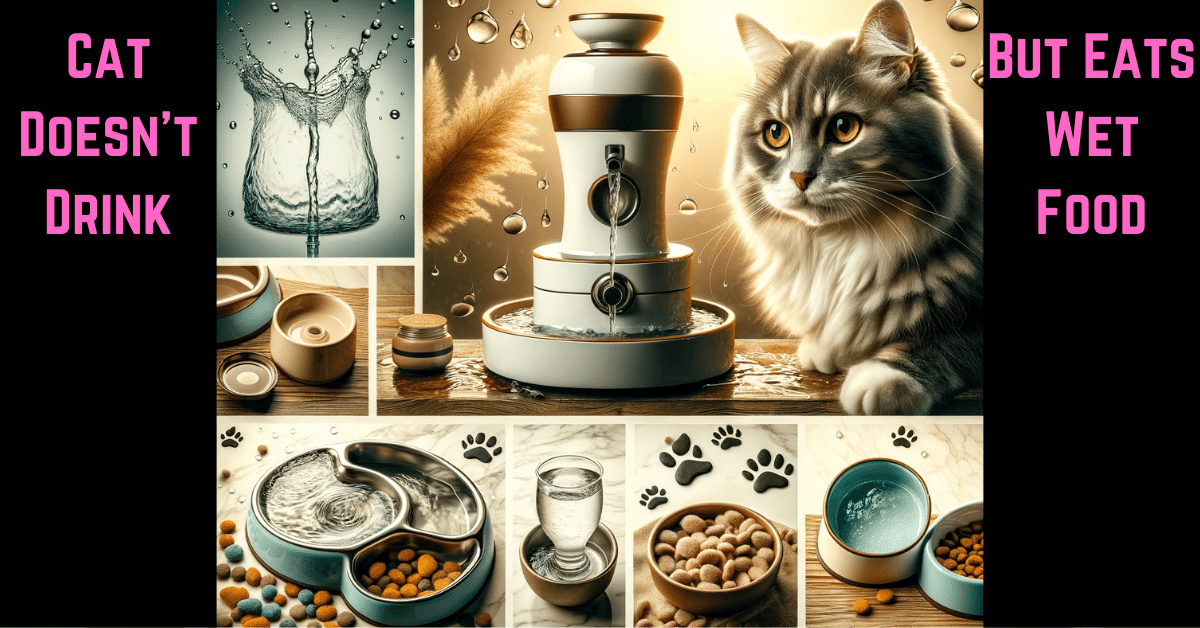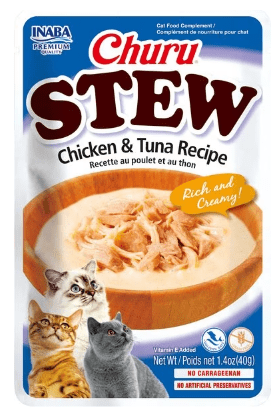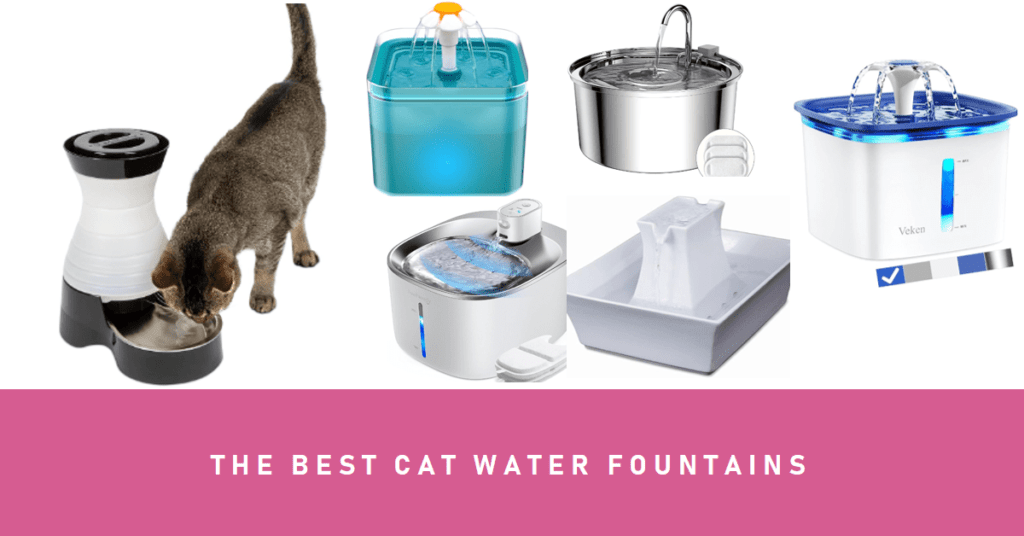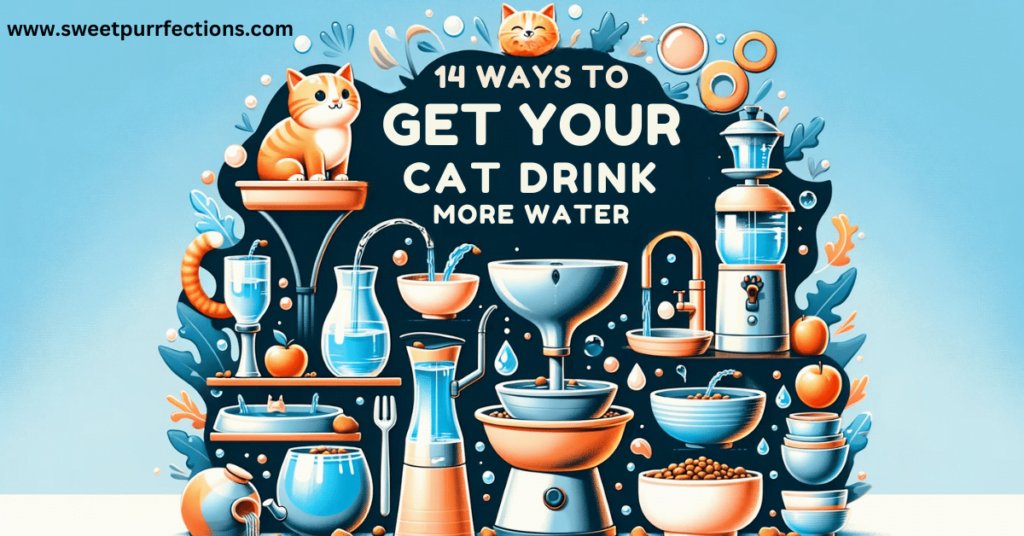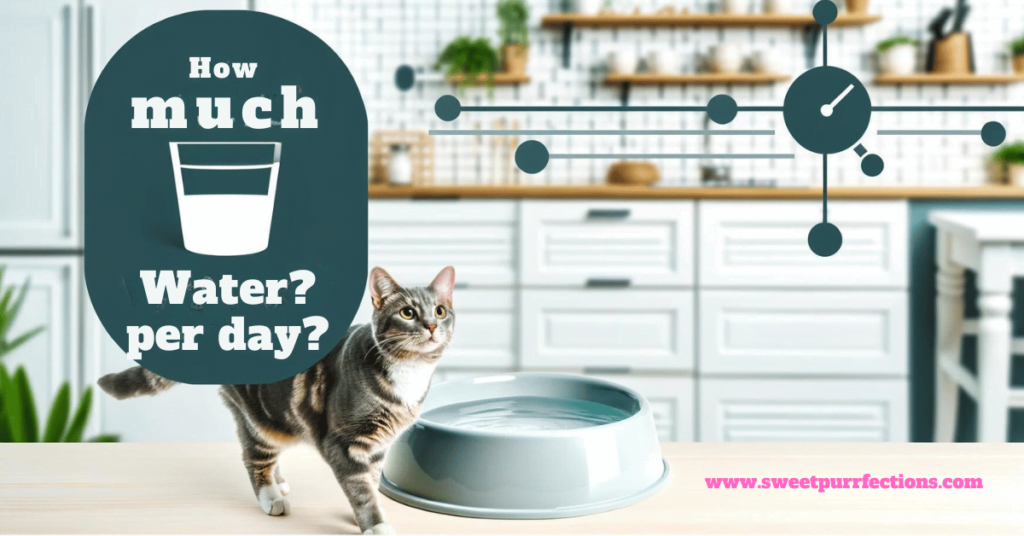This post contains affiliate links and I will be compensated if you make a purchase after clicking on my links.
Navigating Cat Hydration: When Your Cat Doesn’t Drink Water But Eats Wet Food
Have you ever noticed your cat acting like a seasoned hacker, finding clever ways to bypass the water bowl and dive straight into their wet food? It’s not just a quirky feline trait; there’s a science behind it. In the feline world, some cats effectively meet their hydration needs through wet food rather than lapping up water.
This might seem unconventional, but it’s often perfectly okay. Wet food, rich in moisture, can be like an all-in-one for cats – efficiently and smartly meeting their hydration needs alongside their nutritional requirements. So, if your cat isn’t sipping much water but is keen on their wet food, they’re likely still on track with their hydration needs, just in their unique way.
Understanding Cat Hydration: The Critical Role of Water and Wet Food
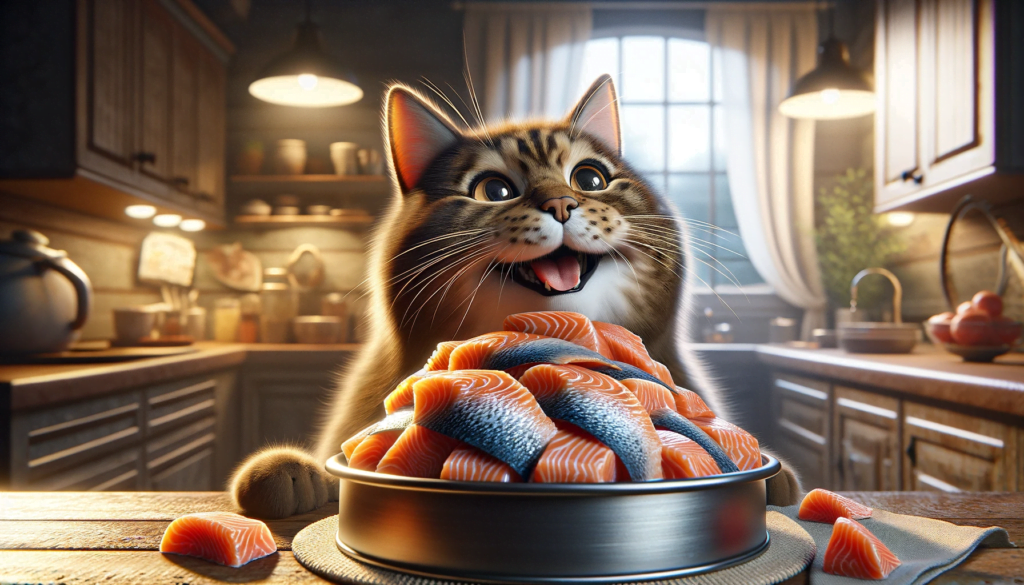
Hydration in cats isn’t just important – it’s a critical component of their health and well being. Think of water as the essential software running in the background of your cat’s system, crucial for maintaining everything from kidney function to temperature regulation.
But here’s where it gets interesting: wet food can be a significant factor in keeping your cat well-hydrated. Typically containing about 70-80% water, wet food serves as a hydrating powerhouse. This high moisture content means cats on a wet food diet may require considerably less drinking water compared to those on a dry food diet.
For cats, especially those who view their water bowl with suspicion (or downright disdain), wet food offers a hydration hack. It’s a clever workaround that ensures they’re getting the necessary fluids without having to drink as much. So, while they may not be hovering around their water bowl, they’re still getting the hydration they need.
It’s crucial to underscore why hydration is so vital. Poor hydration can lead to serious health issues for cats, including urinary tract infections and kidney problems. These conditions are not only painful for your furry friend but can also lead to severe complications if left unchecked.
Why Some Cats Skip the Water Bowl
It’s a puzzling question for many cat owners: why does their feline friend often ignore the water bowl? The reasons can be quite varied and interesting. For one, the location of the water bowl can play a significant role. Cats are instinctively drawn to water sources that feel safe and undisturbed. If the bowl is in a high-traffic area or too close to their food, they might turn their noses up at it.
Then there’s the issue of freshness. Cats have a strong preference for fresh, running water, harking back to their wild ancestors’ instincts. Stagnant water is a no-go for them; it’s just not appealing. It’s not that your cat’s water bowl is outdated, per se – it might just not be meeting their instinctual standards for freshness and safety.
In addition to location and freshness, the type of water bowl can also make a big splash in your cat’s drinking habits. Cats can be quite particular about their bowls. Plastic bowls might harbor odors that turn off their sensitive noses, while stainless steel or ceramic options are often more appealing and easier to clean. Also, consider the bowl’s size and depth – some cats don’t like their whiskers touching the sides.
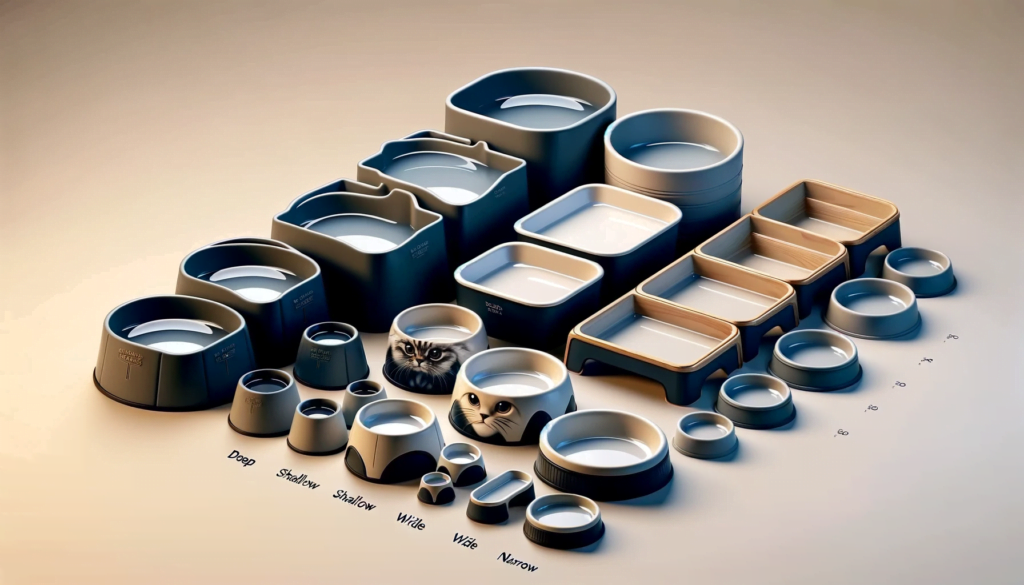
The Wet Food Workaround
In the quest to keep cats hydrated, wet food emerges as a secret weapon. As mentioned earlier, wet food typically contains about 70-80% water, making it an excellent source of hydration.
It’s particularly beneficial for cats who are reluctant to drink enough water on their own. But not all wet foods are created equal. Some are packed with more protein, some have added vitamins and minerals, and others are designed for specific health needs like kidney support or weight management.
Incorporating a variety of wet foods into your cat’s diet can not only help keep them hydrated but also ensure they’re getting a well-rounded intake of nutrients. It’s a straightforward solution to a complex problem – ensuring your cat stays hydrated without constantly monitoring their water intake.
Alternative Hydration Sources
But wait, there’s more in our hydration toolkit! Beyond wet food, there are alternative hydration sources like cat water broths or hydration gels to consider.
These options can be particularly enticing for those finicky feline drinkers, offering a novel and enjoyable twist to their daily hydration routine. They’re a great way to ensure your cat stays hydrated, adding a bit of variety and excitement to their water intake.
Balancing the Hydration Circuit
Achieving the right balance between wet and dry food is key to ensuring your cat stays properly hydrated. While wet food is a great source of moisture, dry food has its benefits, too – it’s good for dental health and often more convenient for feeding. Think of it as balancing different components of a well-oiled machine.
Here are a few tips to maintain this balance:
- Mix wet and dry food: This can provide the benefits of both, keeping your cat interested and well-fed.
- Gradual changes: If you’re introducing more wet food into your cat’s diet, do it gradually to avoid digestive upset.
- Quality matters: Choose high-quality foods that meet your cat’s nutritional needs.
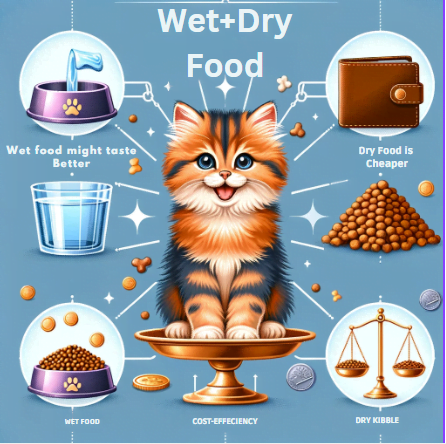
Pro Tip: To encourage water drinking, consider investing in a cat water fountain. Many cats prefer running water, and a fountain can mimic this natural preference. It’s like upgrading their hydration station with the latest tech!
Signs Your Cat is a Hydration Pro (or Needs a Firmware Update)
Here are signs your cat is well-hydrated:
- Elastic skin: Gently pinch your cat’s skin; if it springs back quickly, they’re likely well-hydrated.
- Moist gums: Healthy, hydrated cats have wet, slick gums.
- Regular urination: A well-hydrated cat should urinate frequently and have light-colored urine.
On the flip side, signs of dehydration include:
- Dry, sticky gums
- Lethargy
- Decreased appetite
- Sunken eyes
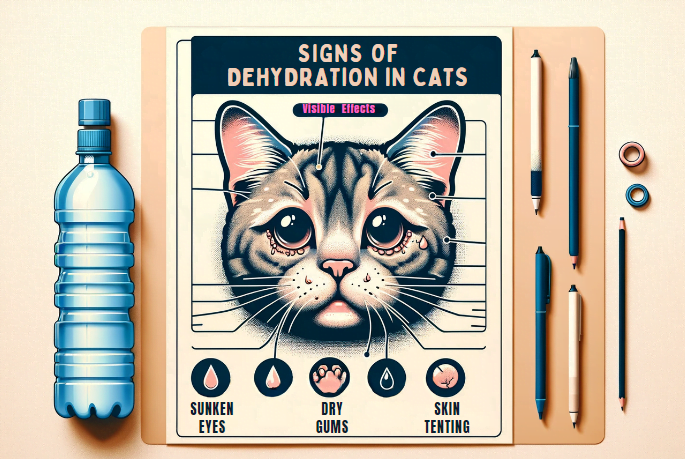
While keeping an eye on these signs, remember: sudden changes in your cat’s drinking habits are important to note. If you notice abrupt shifts – either drinking too much or too little – this could be a sign of something more serious.
Changes in drinking behavior can sometimes indicate underlying health issues, so consulting a vet is a wise step. It’s essential to ensure your cat’s health is on the right track, and a professional can provide the best guidance.
Final Thoughts: When Your Cat Doesn’t Drink Water But Eats Wet Food
In the feline world of cat doesn’t drink water but eats wet food, hydration becomes an intriguing puzzle. It reminds us that our purring companions have their own set of rules when it comes to water and nutrition.
As cat enthusiasts, it’s our role to decode these habits, ensuring our furry friends are not just content but flourishing. So, keep a watchful eye on their water bowl (or lack thereof) and their penchant for wet food.
Meet Sean, a fintech whiz with a penchant for pet purrs and blockchain buzz. After a decade of fintech feats, Sean's tech talents leaped from ledger lines to litter lines, driven by a passion for pets and a vision for a more connected pet care community. With three critter companions as co-pilots, Sean launched this blog to share a treasury of pet-friendly tech tips and tales.

